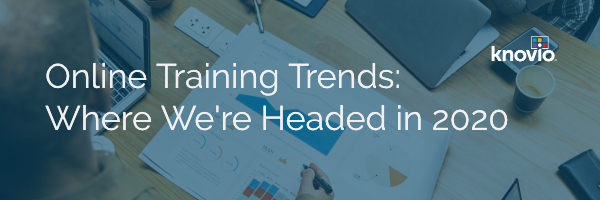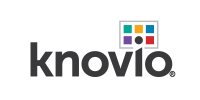Online Training Trends: 2020

October 29th, 2019: With 2020 right around the corner, a lot of training professionals have started looking at the trends shaping online learning and how this is impacting the way our viewers interact with content. We all want to stay on top of these changes, but combing through article after article can be pretty time intensive.
I've identified 5 major trends in online learning, how they impact the way viewers are interacting with your content, and what you can start doing to more effectively engage your audience. With the new year on the horizon, it's the best time to look at where learning is heading and what this means for content creators like yourself. Read on to discover the challenges the new year brings and how your team can stay ahead of the curb!

Microlearning is the idea of creating smaller more digestible and more numerous training presentations that last only a few minutes and focus on only a handful of concepts.
With the rise of online learning, this has by far been one of the most prevalent trends and shows no sign of slowing down. As your audience changes the way it interacts with presentations, it's important for your content change with it and as such, many professionals have taken to either structuring presentations into multiple shorter segments, or taking existing content and splitting it into smaller multiple presentations.
Doing this has two effects on your audience, the first being that they are far more likely to watch your content, as multiple 2-3 minute videos are far less overwhelming than seeing a 45-minute training. The second advantage is that viewers will comprehend and digest material more effectively when only being presented with only one or two pieces of information at a time.

It's no secret the internet has drastically changed the way professionals view training, but in recent years, this has led to a new trend that promotes the creation and distribution of content to global audiences.
Today, there's a growing focus on creating online presentations that are able to reach extremely large audiences across multiple locations. This may be across a few nearby locations or for large teams that span the globe. This has led to advantages like the ability to standardize training content and easily share resources.
The major advantage of this is that it allows teams to save time as they can reuse content for multiple locations, only making small changes that will make the content relevant to different audiences. A potential drawback, however, is the issue with translation of content when shared with groups of people who may have a different native language. For this reason, translation software or bi-lingual assistance is often used when this type of situation occurs.

The rapid rise of technology is impacting the expectations of viewers and the type of content they want to engage with, favoring the introduction of mixed media and augmented reality which has begun to bleed into online learning.
More than ever before, your training content has to live up to high expectations. With the amazing entertainment available, static content will no longer hold a viewer's attention. This is where mixed media presentations and augmented learning come in, presenting material in a way that will captivate your audience.
Adding multimedia content to static slide decks is an easy way to create a multimedia presentation that will engage your audience and elevate your learning program. Augmented reality is another way that training has begun to further engage viewers and is currently in use at some universities.

One of the greatest shifts in learning is the expectation and understanding from viewers that it is never over. Today's audience not only wants to constantly improve their current skill set but to expand their learning so they are able to more effectively move forward in their career.
Professional development has become extremely important to today's employees and is something you should always keep in mind. By doing so, you will not only show employees you value them and care about their career advancement but will also make them more productive in their current roles.
To keep up with this expectation and to stay competitive, training professionals need to understand that supplying a continuous source of training content is important. Using a program that allows you to quickly create and edit content is essential for keeping up with this demand. Repurposing existing content to develop smaller and more numerous presentations can also make this process a bit easier.

If there's one thing that every one of your audience members is looking for, it's an easy way to access the content they need. Since there are so many other ways they are able to access online content (think Netflix and Hulu) viewers will expect a high level of ease of use from your team as well.
Although there are many ways to provide content, learning portals have by far become the most popular and common. This is in large part because they are not only able to provide the specific content viewers need without becoming overwhelming but can provide personalized features like the ability to track progress, favorite content, and search by keyword.
Learning portals can be built from scratch but in an effort to save time, most professionals will outsource to a system that allows them to quickly set up and add content to these portals.
Final Thoughts:
As you start to finish up the year and begin planning training programs for 2020, you will want to keep these trends in mind and consider how they are impacting the changes in viewer expectations. Knowing this, however, your team can plan training presentations in a way that will
To see a program that is able to prepare your team and make creating and presenting content in an engaging manner, I'd like you to invite you to explore Knovio. Take a look at how easy your content can be transformed into an exciting presentation then shared instantly in branded online portals.
